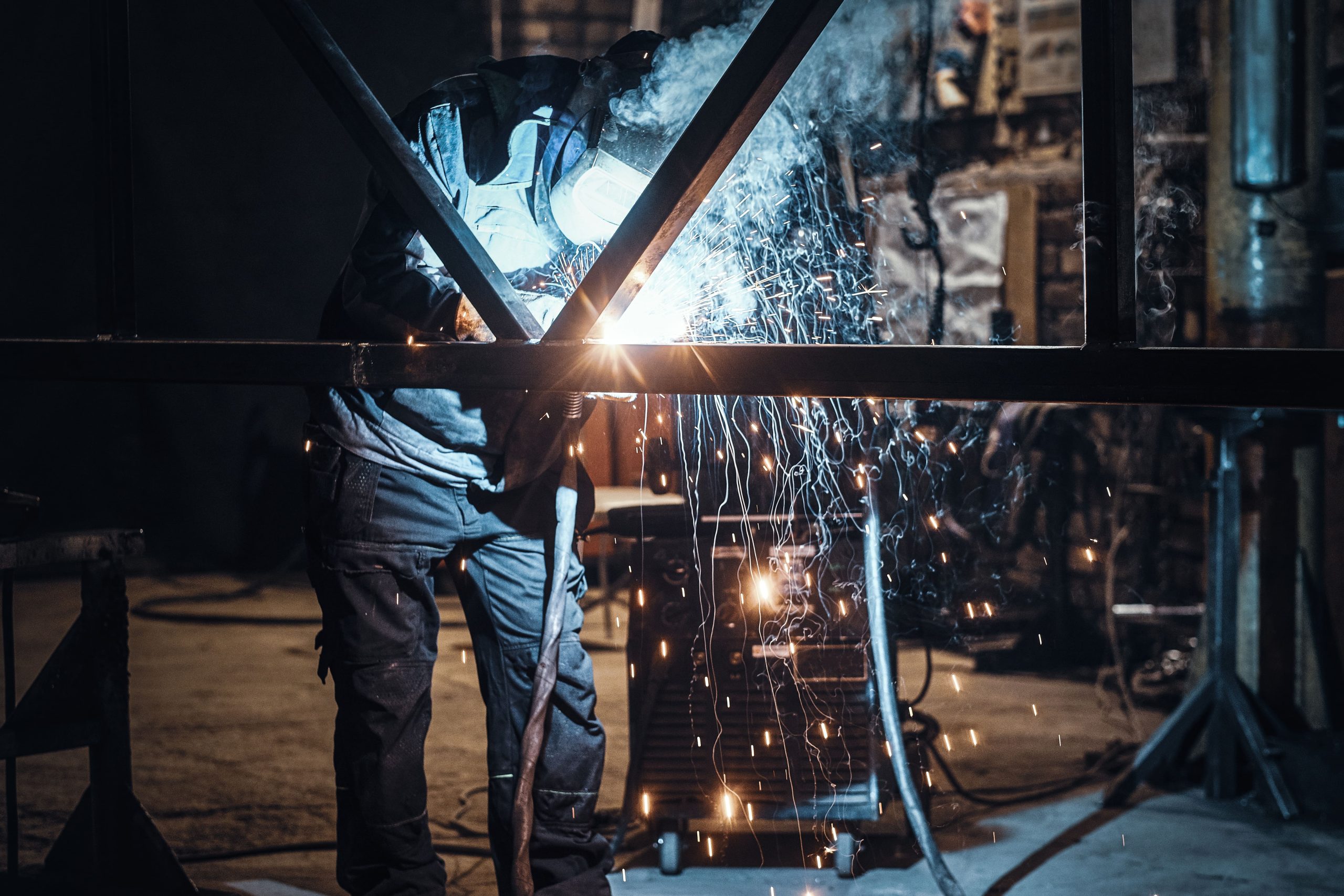In stainless steel manufacturing, quality control is crucial to ensure that the final product meets stringent industry standards and performs reliably in its intended application. Stainless Steel is a fundamental material used in a wide range of industries, from construction and infrastructure to automotive and aerospace. Given its critical role, any defects or inconsistencies in stainless steel can lead to significant safety risks, structural failures, and costly repairs. This article explores the importance of quality control in stainless steel manufacturing and outlines how effective quality management can enhance product performance and reliability.
What is Quality Control in Stainless Steel Manufacturing?
Quality control (QC) in stainless steel manufacturing refers to the systematic process of monitoring, testing, and ensuring that stainless steel products meet specific standards and specifications. This process involves various stages of production, from raw material selection and processing to final inspection and testing.
Key Stages of Quality Control
- Raw Material Inspection: Ensuring that the stainless steel raw materials meet the required standards before they enter the manufacturing process.
- Process Control: Monitoring and controlling the manufacturing processes to maintain consistency and quality throughout production.
- Product Testing: Conducting various tests on the finished stainless steel products to verify their properties and performance.
- Final Inspection: Performing a thorough inspection of the final product to ensure it meets all specifications and quality standards.
Why is Quality Control Crucial in Stainless Steel Manufacturing?
Quality control is essential in stainless steel manufacturing for several reasons. Here’s why maintaining high-quality standards is so important:
1. Ensuring Structural Integrity
Stainless Steel is widely used in critical applications such as bridges, buildings, and machinery. Ensuring its structural integrity is paramount for safety and functionality. Quality control helps prevent defects that could lead to structural failures or unsafe conditions.
- Preventing Failures: By detecting and correcting issues early in the production process, quality control helps prevent defects that could compromise the stainless steel’s strength and durability.
- Safety Assurance: High-quality stainless steel products ensure that structures and components perform reliably under expected loads and stresses, protecting lives and property.
2. Meeting Industry Standards and Specifications
Stainless Steel products must meet specific industry standards and specifications, such as those set by ASTM International, ISO, or regional standards. Quality control ensures that products comply with these standards.
- Compliance: Regular testing and inspection ensure that stainless steel products meet regulatory and industry requirements, reducing the risk of non-compliance.
- Consistency: Quality control processes help maintain consistency across different batches and production runs, ensuring that every product meets the required specifications.
3. Enhancing Performance and Longevity
The performance and longevity of stainless steel products depend on their quality. Steel that meets high standards will perform better and last longer, reducing the need for maintenance and replacement.
- Durability: Quality-controlled stainless steel is less prone to issues such as corrosion, cracking, or deformation, which can affect its performance and lifespan.
- Reliability: Ensuring consistent quality helps achieve reliable performance in various applications, from high-stress environments to everyday use.
4. Reducing Costs and Waste
Effective quality control can help reduce costs and minimize waste by identifying and addressing issues early in the production process.
- Cost Savings: Detecting defects early prevents costly rework and reduces the risk of product recalls or replacements.
- Waste Reduction: By improving process efficiency and product quality, quality control reduces material waste and rework, leading to more sustainable manufacturing practices.
Key Quality Control Measures in Stainless Steel Manufacturing
To ensure that stainless steel products meet high-quality standards, several key quality control measures are implemented throughout the manufacturing process.
1. Raw Material Testing
Before processing, raw materials (such as iron ore, scrap metal, or alloys) are tested for chemical composition, purity, and other properties to ensure they meet the required specifications.
- Chemical Analysis: Testing for elements like carbon, manganese, silicon, and sulfur to ensure the correct alloy composition.
- Physical Properties: Assessing properties such as hardness, ductility, and tensile strength to confirm that the raw materials will perform as expected.
2. Process Monitoring
During manufacturing, various process parameters are monitored to maintain consistency and quality. This includes temperature control, pressure settings, and processing times.
- Temperature Control: Maintaining precise temperatures during processes like melting, casting, and rolling to ensure consistent material properties.
- Process Adjustment: Making real-time adjustments to processes based on monitoring data to prevent deviations from quality standards.
3. Non-Destructive Testing (NDT)
Non-destructive testing methods are used to inspect the stainless steel for defects without damaging the material. Common NDT methods include:
- Ultrasonic Testing: Using sound waves to detect internal flaws such as voids or inclusions.
- Magnetic Particle Testing: Identifying surface and near-surface defects using magnetic fields and iron particles.
- Radiographic Testing: Using X-rays or gamma rays to reveal internal defects or irregularities.
4. Mechanical Testing
Mechanical testing evaluates the stainless steel’s physical properties to ensure it meets performance criteria. Key tests include:
- Tensile Testing: Measuring the stainless steel’s strength, elongation, and elasticity under tensile stress.
- Impact Testing: Assessing the stainless steel’s toughness and resistance to impact or sudden stress.
- Hardness Testing: Determining the stainless steel’s hardness to ensure it meets the required specifications for its application.
5. Final Product Inspection
Once manufacturing is complete, the final product undergoes a thorough inspection to ensure it meets all quality and specification requirements.
- Dimensional Checks: Verifying that the stainless steel components meet precise dimensional and tolerance specifications.
- Visual Inspection: Examining the surface of the stainless steel for any visible defects or irregularities.
Implementing an Effective Quality Control System
To achieve and maintain high-quality standards in stainless steel manufacturing, an effective quality control system should be implemented. Here are some key steps in establishing a robust QC system:
1. Develop Clear Quality Standards
Define clear quality standards and specifications based on industry requirements and customer expectations. Ensure that all team members are familiar with these standards and understand their importance.
2. Train and Certify Personnel
Invest in training and certification for quality control personnel. Skilled and knowledgeable staff are essential for effectively implementing and maintaining quality control processes.
3. Use Advanced Technologies
Incorporate advanced technologies and tools into the quality control process, such as automated testing equipment, digital monitoring systems, and data analytics. These tools can improve accuracy, efficiency, and consistency.
4. Implement Continuous Improvement
Adopt a continuous improvement approach to quality control. Regularly review and analyze quality data to identify areas for improvement and implement corrective actions as needed.
5. Conduct Regular Audits
Perform regular internal and external audits to ensure compliance with quality standards and identify potential issues. Audits help verify that quality control processes are being followed and are effective in maintaining product quality.
Challenges in Quality Control and How to Address Them
Despite its importance, quality control in stainless steel manufacturing can face several challenges. Addressing these challenges effectively is crucial for maintaining high standards.
1. Complexity of Manufacturing Processes
Stainless Steel manufacturing involves complex processes that can be difficult to monitor and control.
Solution:
- Implement Process Control Systems: Use advanced process control systems to monitor and adjust manufacturing parameters in real-time.
- Standardize Procedures: Develop standardized procedures and guidelines to ensure consistency and accuracy throughout the manufacturing process.
2. Variability in Raw Materials
Variability in raw materials can impact the quality of the final product.
Solution:
- Thorough Testing: Conduct comprehensive testing of raw materials to detect any variations and ensure they meet required specifications.
- Supplier Quality Management: Work closely with suppliers to ensure consistent quality of raw materials and address any issues promptly.
3. Detection of Subtle Defects
Some defects may be subtle and difficult to detect with standard testing methods.
Solution:
- Use Advanced Testing Methods: Implement advanced non-destructive testing techniques and utilize high-resolution inspection tools to detect subtle defects.
- Regular Calibration: Ensure that testing equipment is regularly calibrated and maintained to provide accurate results.
Conclusion
Quality control is essential in stainless steel manufacturing to ensure that products meet the required standards for safety, performance, and durability. By implementing rigorous quality control measures, manufacturers can prevent defects, ensure compliance with industry standards, and enhance the reliability of stainless steel products. Effective quality control not only contributes to the overall success of manufacturing operations but also plays a critical role in delivering high-quality products that meet the needs and expectations of customers.



